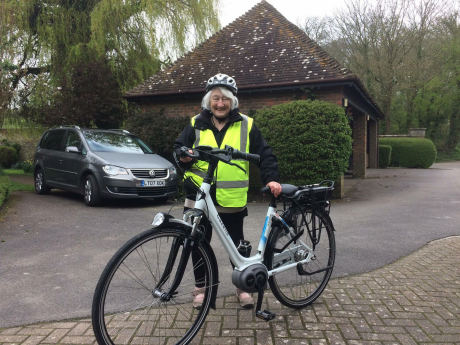Master your cycling skills
One to one adult cycle training
Helping you return to cycling or gain confidence on your bike
The sessions can help you
-
Have a roadworthy bike that fits you
Regularly check the brakes and tyre pressure, and don't ignore any strange noises, vibrations or jumping gears.
- Have great control skills
- Move your bodyweight back when making an emergency stop
- Be able to swerve safely
- Use your gears efficiently
- Control the bike while looking behind
- Confidently ride one-handed
- Ride with your fingers on your brake levers
- Use the road
Cycling in parks or shared use paths is fine but you are missing out on the freedom to cycle quickly to where you want to go. Cycling on pedestrian only pavements is against the law.
- Think positioning
Ride an arm's length away from the kerb, never in the gutter, at least a 'door's width' away from parked cars. Ride in the stream of traffic when you can match its speed.
- Check behind frequently, especially before changing position on the road
Looking behind attracts attention of drivers as well as ensuring that you know what is happening around you.
- See, be seen, communicate!
Communicate your intentions with hand signals and your road positioning. Most drivers and cyclists appreciate a friendly nod or a thanks if people let you past.
- Act like a road user
Cyclists are still road users, even though you get to walk across crossings and use cycle paths. Make sure you use front and rear lights at dusk, evenings, and in poor weather, and always stop at red lights.
- Aim to arrive at junctions in the middle of your lane, whether you are turning left, right, or going straight ahead.
Approach roundabouts, and move through them, in the middle of the lane you are using as well. This prevents you being 'squeezed' by drivers overtaking. Use hand signals to indicate your direction.
- Be HGV / large vehicle / bus aware
You could be at risk if cycling on the left of an HGV as it turns left (in the driver's blind spot). Ensure that you are positioned with enough space behind or in front of the lorry so the driver in the cabin can see you. If you can't see the mirror the driver probably can't see you.
- Get some cycle training
Reading these tips is a small start but there is no substitute for on-road cycle training.






